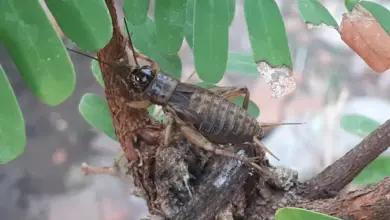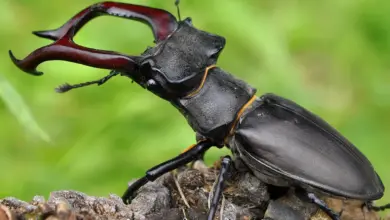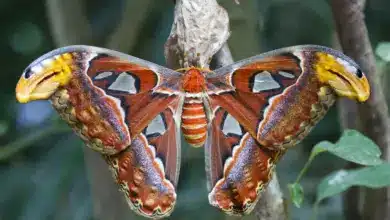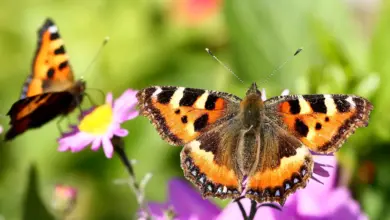What Do Anise Swallowtail Caterpillars Eat
What Do Anise Swallowtail Caterpillars Eat: A Friendly Guide for Curious Minds
Anise swallowtail caterpillars are fascinating creatures with specific dietary preferences. As the name suggests, these caterpillars primarily feed on anise plants, but they have also been known to consume plants from the parsley and carrot families.
These caterpillars thrive on plants containing certain chemical compounds, such as anise aldehyde found in some umbelliferous plants and methyl clavicol found in citrus plants. These substances may act as behavioral attractants, luring caterpillars to suitable host plants for food and shelter.
[ez-toc]
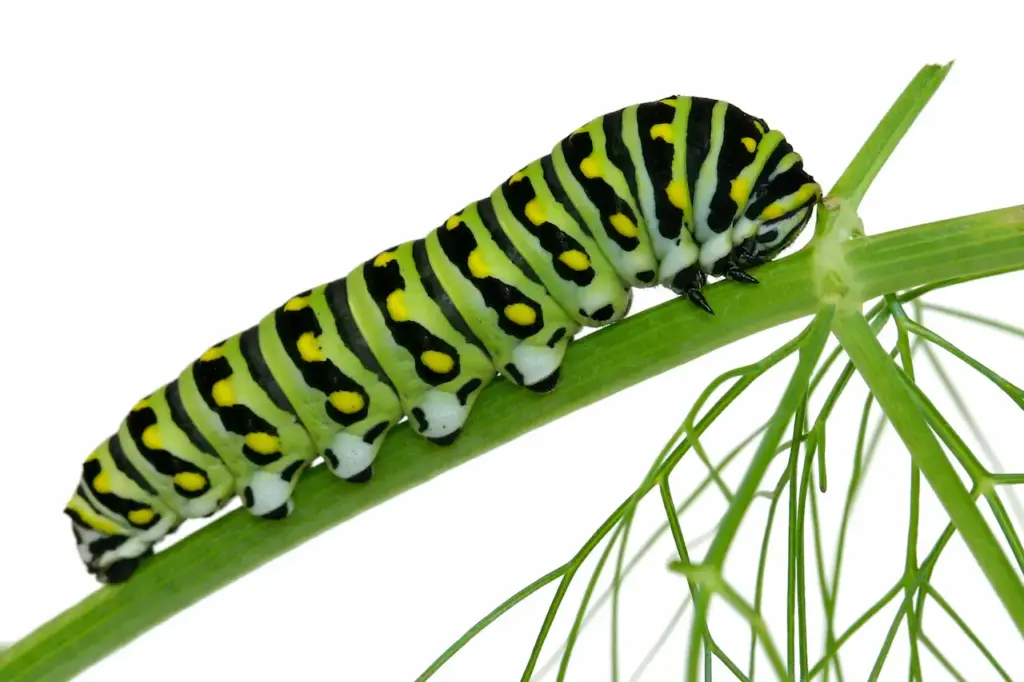
As a result, understanding the diet of anise swallowtail caterpillars can help you attract more of these captivating insects. Providing a suitable environment with the right host plants will invite them into your garden, adding a touch of beauty and helping to maintain a balanced ecosystem.
Identification of Anise Swallowtail Caterpillar
Coloration
Anise swallowtail caterpillars are known for their distinct coloration. These caterpillars are usually green with black bands containing orange spots. Their color may change depending on their environment, with more green and less black in hot, dry sites, while under cool, humid conditions the green might even disappear1.
Size and Markings
As for their size, anise swallowtail caterpillars grow from resembling bird droppings when they are small1, to becoming larger with more prominent markings. On their underside, they have a beautiful yellow hue that contributes to their overall appearance. The black bands mentioned earlier help them blend into their environment and deter predators.
Distinguishing Features
One of the most distinguishing features of these caterpillars is their red eyespots with a black pupil2. This feature makes them easily recognizable and adds to their unique appearance. Knowing these key features of the anise swallowtail caterpillar will help you identify them in the wild.
Remember, while identifying these fascinating creatures, observe their size, markings, and other distinguishing features to confirm their identity. Enjoy your time exploring nature and discovering these beautiful caterpillars.
Lifecycle of Anise Swallowtail Caterpillar
Egg Stage
Anise swallowtail caterpillars start their life as tiny eggs. During this stage:
- The eggs take about 4-6 days to hatch, depending on the temperature.
- They are usually laid on host plants for easy access to food once hatched.
Larva Stage
Once the eggs hatch, the larva stage begins:
- Caterpillars eat host plant leaves when young, and inflorescences when older.
- They go through several molts, eventually reaching the L5 instar stage.
At this stage, the following characteristics are observed:
- Males tend to develop faster than females.
- The caterpillars do not build nests and wander for pupation sites.
** Development timeline:**
- About 15-24 days post egg-hatch, caterpillars pupate.
Pupa Stage
The pupa stage is the next step in the life cycle:
- Caterpillars form a chrysalis for metamorphosis.
- Pupae overwinter, ensuring survival for the next season.
Adult Butterfly Stage
Lastly, the adult butterfly stage is reached:
- Beautiful Anise Swallowtail butterflies emerge from the chrysalis.
- Adult butterflies find mates to start the life cycle all over again.
This brief overview of the Anise Swallowtail caterpillar’s life cycle highlights key aspects of their development from eggs to adult butterflies.
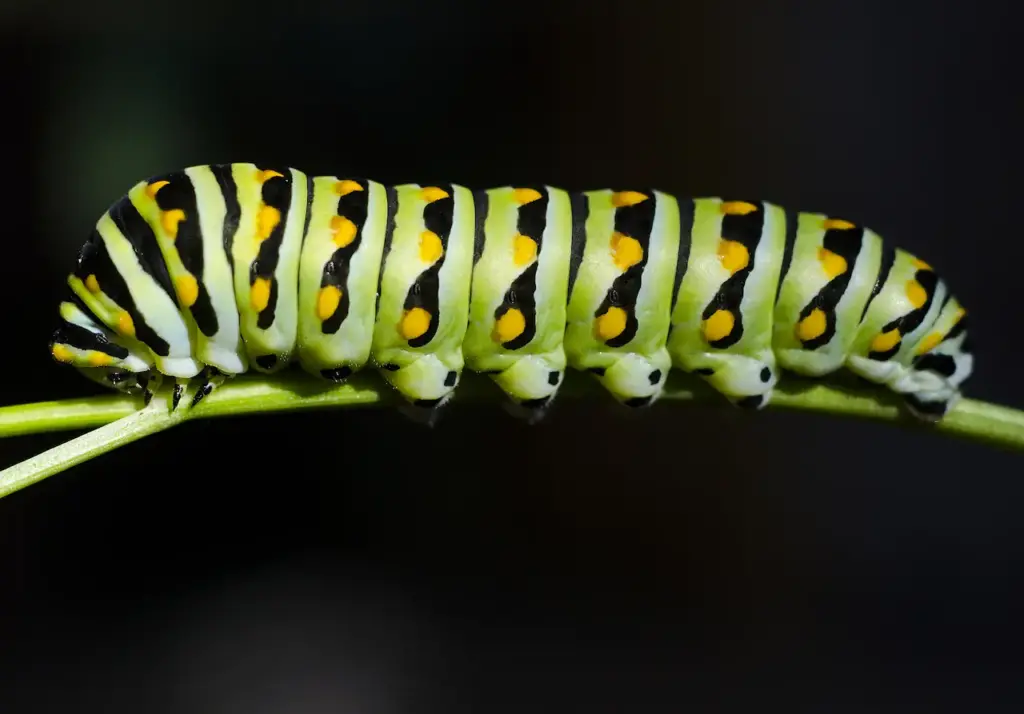
Feeding Habits
Anise swallowtail caterpillars are known for their diet preferences which mainly revolve around host plants from two families: Apiaceae (carrot family) and Rutaceae (citrus family). To give you an idea, here are some of their favorite plants:
- Carrot family (Apiaceae) plants, such as:
- Parsley
- Fennel
- Carrot
- Dill
- Citrus family (Rutaceae) plants like:
- Lemon
- Orange
- Grapefruit
These caterpillars can also sometimes be seen eating other plants, like tulip tree, sweetbay, sassafras, and spicebush.
In the early stages of their growth, Anise swallowtail caterpillars focus on eating tender leaves and flowers. As they grow, they can consume larger amounts of foliage, helping them develop into butterflies.
Remember, it’s essential to provide the right host plants if you’re looking to attract Anise swallowtail caterpillars to your garden. By planting a mix of the mentioned plants, you’ll create a friendly environment for them to thrive in.
Habitat and Distribution
The Anise Swallowtail caterpillars are primarily found in the western regions of North America, including areas ranging from British Columbia to North Dakota and extending southwards to Mexico and New Mexico1.
These caterpillars have a diverse habitat, with a preference for mountains, bare hills, and distinct areas in proximity to their food source2.
- Habitat: Mountains, bare hills
- Distribution: Western North America, British Columbia, North Dakota, Mexico, New Mexico
The Anise Swallowtail caterpillars tend to stay close to their host plants, where they find ample food supply. These plants can be readily found in their natural habitat, enabling them to thrive in various conditions3.
Comparison table
| Component | Anise Swallowtail Caterpillar |
|---|---|
| Habitat | Mountains, bare hills |
| Distribution | Western North America |
So, if you’re out exploring the western regions of North America, keep your eyes open for these fascinating caterpillars and admire their unique habitats.
Potential Threats and Survival Mechanisms
Anise swallowtail caterpillars face numerous challenges in their environment, including predators such as birds, spiders, and ants. To keep themselves safe, they’ve developed a few clever defense mechanisms:
- Osmeteria: Anise swallowtail caterpillars are equipped with retractable, fleshy projections called osmeteria. When threatened, they extend these stinkhorns, releasing a foul-smelling odor to deter predators.
- Camouflage: To blend in with their surroundings, these caterpillars cleverly position their bodies to secure themselves to a branch or stem. They use silk threads to attach firmly, making it easier for them to become virtually invisible to potential threats.
In summary, anise swallowtail caterpillars employ a combination of osmeteria and camouflage to protect themselves from predators. By releasing a foul odor and blending seamlessly with their environment, they improve their chances of survival.
Social Structure and Reproduction
In the world of butterflies, the Anise Swallowtail (Papilio zelicaon) is part of the Papilionidae family, which includes other well-known species such as the Zebra Swallowtail, Tiger Swallowtail, and Giant Swallowtail. Swallowtail butterflies usually have a simple social structure, mainly focusing on reproduction.
When it’s time for mating, both male and female Anise Swallowtails emit pheromones to attract one another. Once they find a mate, butterflies engage in internal fertilization. After a successful mating, the female begins her search for the perfect host plant to lay her eggs.
Anise Swallowtail caterpillars primarily feed on plants in the Apiaceae family, specifically those with a slight anise scent, like sweet cicely (Osmorhiza longistylis) which is commonly found in Missouri. To help their offspring succeed, female butterflies carefully choose these host plants to ensure a sufficient food supply for their young.
Here is a comparison table of some swallowtail species:
| Species | Family | Key Features |
|---|---|---|
| Anise Swallowtail | Papilionidae | Anise-scented host plants, yellow and black markings |
| Zebra Swallowtail | Papilionidae | White with black stripes, red spots |
| Tiger Swallowtail | Papilionidae | Yellow with black stripes, blue and orange spots |
| Giant Swallowtail | Papilionidae | Largest of the species, yellow and black markings |
To recap, the social structure of Anise Swallowtails and other butterflies in the Papilionidae family is relatively simple, mostly focusing on the reproductive process. Their primary goal is to ensure the survival of the next generation by selecting the right host plants for their caterpillars to thrive on.
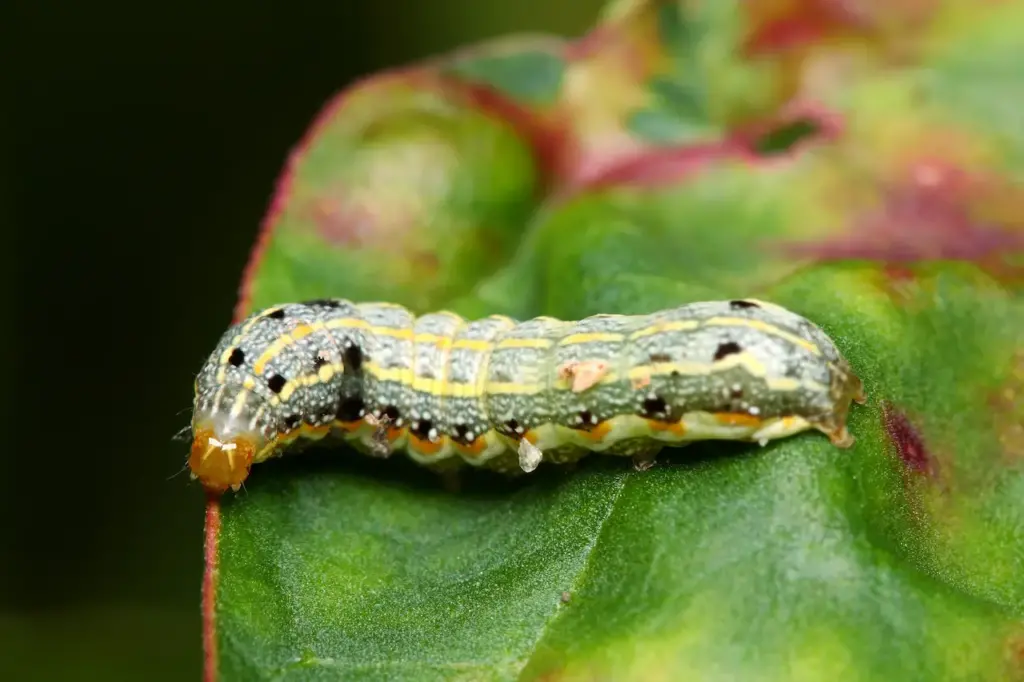
Other Interesting Facts
Anise swallowtail caterpillars (Papilio zelicaon) primarily feed on plants from the Apiaceae and Rutaceae families. But besides their diet, there are many interesting facts about these creatures!
Anise swallowtails, along with other swallowtail species like the black swallowtail (Papilio polyxenes), spicebush swallowtail (Papilio troilus), eastern tiger swallowtail (Papilio glaucus), and western tiger swallowtail (Papilio rutulus) belong to the Lepidoptera order. This order also includes moths.
These butterflies show striking colorations, such as beautiful blue spots on their wings. Some even exhibit light blue eyespots to deter potential predators. The patterns and colors play a significant role in their survival.
The Anise swallowtail has a wingspan ranging between 52-80mm, which can vary based on their environment and region. This makes their size similar to that of some moths. They can be found around trees, where they can feed, rest, and find mates.
The caterpillars typically have a round body shape, with various shades of green and black bands. They camouflage themselves among leaves, mimicking plant structures to avoid predators. While in the caterpillar stage, they can be housed in a cage before transforming into butterflies.
Their lifespan as caterpillars is relatively short. After undergoing metamorphosis, they enter the adult butterfly stage which lasts from a few weeks to a few months, depending on factors like availability of food and safe habitat.
Anise swallowtail butterflies, like many other species, enjoy hilltopping behavior. At certain locations like Castle Peak, you might see dozens of them congregating and interacting.
NatureServe, a renowned organization that compiles data on plants and animals, provides valuable information about their conservation status and habitats. Species from the genus Papilio, including the Anise swallowtail, can be researched through their data systems to understand their distribution and environmental needs.
References
Anise swallowtail caterpillars (Papilio zelicaon) are mainly herbivorous feeders. They have a preference for plants from the Apiaceae family, commonly known as the carrot or parsley family1. In this section, you’ll find some key facts about the dietary habits of these fascinating insects.
Anise swallowtails enjoy feasting on a variety of plants in the Apiaceae family, such as:
- Anise (Pimpinella anisum)
- Carrot (Daucus carota)
- Fennel (Foeniculum vulgare)
- Queen Anne’s lace (Daucus carota)
- Parsley (Petroselinum crispum)
These plants provide essential nutrients for the caterpillars’ growth and development2.
The table below compares some common plants that anise swallowtail caterpillars feed on:
| Plant | Scientific Name | Plant Type | Caterpillar Preference |
|---|---|---|---|
| Anise | Pimpinella anisum | Herb | High |
| Carrot | Daucus carota | Vegetable | High |
| Fennel | Foeniculum vulgare | Herb | High |
| Queen Anne’s lace | Daucus carota | Wildflower | Moderate |
| Parsley | Petroselinum crispum | Herb | High |
Anise swallowtail caterpillars are not typically considered pests, as they tend to feed on a selective range of plants3. However, if you grow any of the plants mentioned above, keep an eye out for these vibrant creatures enjoying a meal in your garden.
